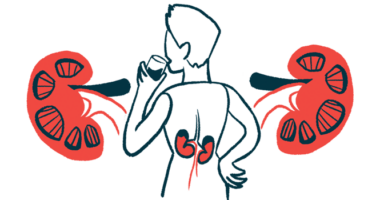Soliris effectively treated aHUS in young woman with SLE: Case report
Autoimmune conditions are rare together, but can be life-threatening

Soliris (eculizumab) was used to effectively treat atypical hemolytic uremic syndrome (aHUS) in a young woman with systemic lupus erythematosus (SLE), another autoimmune condition, a case report shows. The therapy was safely discontinued without causing an aHUS relapse, while immunosuppressant treatments for SLE were maintained.
This “case highlights aHUS triggered by a first presentation of SLE,” the researchers wrote. “Early recognition of aHUS in SLE is pivotal in guiding appropriate therapeutic interventions.”
The case study, “Systemic lupus erythematosus presenting with atypical hemolytic uremic syndrome: a case report and review of the literature,” was published in Rheumatology International.
“Prompt initiation of [Soliris] may reduce the potential morbidity associated with aHUS, which may be due to plasmapheresis, additional immunosuppression, or progression of the disease itself,” they wrote.
SLE is the most common form of lupus wherein self-reactive antibodies attack tissues and organs, including the kidneys. Lupus nephritis is a complication of SLE that features kidney inflammation and damage, and can result in kidney failure. The co-occurrence of aHUS with SLE is rare, but can lead to life-threatening complications.
aHUS is a form of thrombotic microangiopathy, a group of diseases marked by the destruction of red blood cells, called hemolytic anemia, low platelet counts, and blood clots in small blood vessels. It can also cause organ damage, most commonly to the kidneys. Both SLE and aHUS are marked by the excessive activation of the complement cascade, a part of the immune system that’s normally involved in defending against infections.
A diagnosis of SLE and aHUS
Here, a team of researchers in Canada described the case of a 23-year-old woman with newly diagnosed SLE and lupus nephritis, who also developed aHUS that was effectively treated with Soliris, a complement-suppressing therapy.
The woman presented with a three-week history of headache, general discomfort, and generalized body swelling. Blood tests revealed mild acute kidney injury, anemia, and a low number of platelets and leukocytes, or white blood cells. Her lymph nodes and spleen were also enlarged.
Further tests revealed antinuclear antibodies, including those targeting double-stranded DNA, which are considered to be highly specific markers for SLE. She also had abnormal levels of certain complement proteins, and high levels of protein in her urine, signaling kidney dysfunction.
These observations supported the diagnosis of SLE with suspected lupus nephritis. This was confirmed in a kidney biopsy that showed signs of advanced kidney disease.
The woman’s kidney function deteriorated despite treatment with methylprednisolone, a corticosteroid prescribed to SLE patients to reduce immune system activity. This was accompanied by hemolytic anemia. Her kidney function continued to worsen even after further SLE treatment with methylprednisolone, mycophenolate mofetil, and hydroxychloroquine, and several rounds of plasma exchange therapy, which involves removing and replacing the liquid portion of blood, or plasma.
Researchers considered aHUS and treatment with Soliris was started, together with recommended immunization to prevent meningococcal infections.
After 20 days, the woman’s platelet counts normalized. Creatinine also decreased to nearly normal levels after six weeks, indicating improved kidney function. She was discharged on continued immunosuppressant treatments and Soliris infusions, given every two weeks.
Soliris was discontinued after nine months, “as she was deemed to be at lower risk of aHUS relapse given normalization of her [kidney] function, improvement in proteinuria and hemolytic parameters, and absence of high-risk complement genetic mutations.” The woman was kept on immunosuppressant therapies for SLE, however, and remained stable thereafter, indicating aHUS was in remission.
A literature review by the authors uncovered 48 identical cases of people with SLE and aHUS. In them, aHUS most often occurred in younger SLE patients with lupus nephritis, anti-dsDNA antibodies, and complement system dysfunction. Most (71.4 %) were treated with Soliris with a trend toward a faster recovery of lab parameters.
“While [Soliris] showcases promising results, its optimal timing and duration remain elusive,” the researchers wrote. “An understanding of a patient’s complement genetics could aid management strategies, and ongoing research into complement-targeted therapies offers promising avenues for both SLE and aHUS treatment.”






